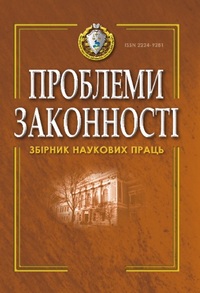Європейське оборонне співтовариство: витоки становлення інтеграції в оборонній сфері
European Defence Community: origins of integration in the defence sphere
Author(s): І. V. Yakovyuk, R. R. OrlovskyySubject(s): EU-Legislation
Published by: Національний юридичний університет імені Ярослава Мудрого
Keywords: European defense community; European integration; military sphere; NATO; Western Union; Western European Union; European Political Community;
Summary/Abstract: There is a tendency among non-historians to force «practioners» of the discipline to justify why the study of a particular episode of the past is so important and to articulate the lessons to be learned from the experience. The fate of international constitutions and treaties is particularly prone to demands of this kind. After all, «constitutional borrowing» has long been a common feature of international law and politics. This article will address one such Treaty from the past. But it does not aspire to preserving its historical integrity; rather to awaken interest in it in the first place.The European Defence Community (EDC) was an ambitious initiative in the first years of the 1950s. Leading European countries had different foreign policy agendas towards it. The EDC. could have been a crucial milestone on the long path towards European integration. European Defense Community(EDC), an abortive attempt by western European powers, with United States support, to counter balancethe overwhelming conventional military ascendancy of the Soviet Union in Europe by the formation of a supranational European army and, in the process, to subsume West German forces into a European force,avoiding the tendentious problem of West German rearmament.One can trace the U.S. influence from the very first stages of the EDC. negotiations. Even in the agreement of the EDC., the footprints of U.S. policies can be observed, bringing the NATO Alliance to the forefront. The EDC. is also interrelated with the Marshall Plan, which leads us to think that the EDC. was not solely a European dream as has been widely argued, but rather an instrument of U.S. foreign policy,which could be resorted to as and when needed.Influenced by the Korean War, the French politician René Pleven evolved a plan that later was put forward by the French foreign minister Robert Schuman at a meeting of the Council of Europe in 1951.Though the weaker members of the North Atlantic Treaty Organization (NATO) were keen, the Scandinavians were cool toward the idea, and opinion in France and Italy was divided. A treaty was actually concluded in Paris in 1952, but tension between eastern and western Europe lessened, and by 1954 the necessity for the EDC seemed also to diminish. However, the failure to ratify its agreement by the French Parliament in 1954 left this project of defence integration stillborn – but paved the way for another solution for the rearmament of Germany: the Western European Union (WEU), as a sub-group of NATO.Nevertheless, the dormant ideal, to contribute to a “European Army” later became one of the ultimate goals of the European Union
Journal: Проблеми законності
- Issue Year: 2017
- Issue No: 139
- Page Range: 264-277
- Page Count: 14
- Language: Ukrainian

